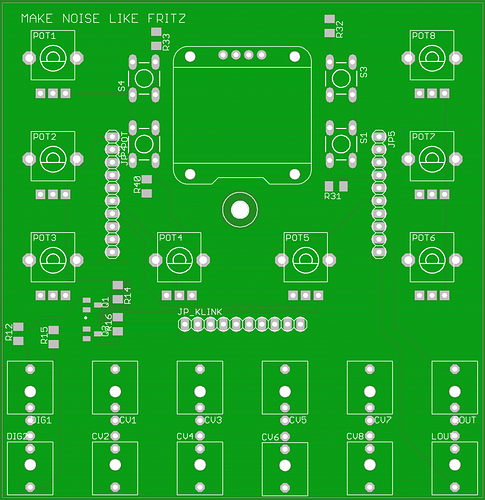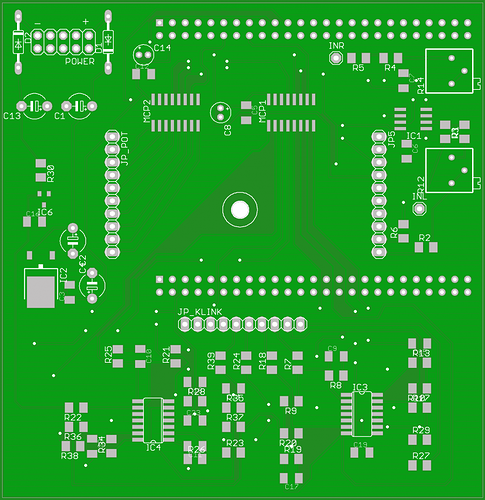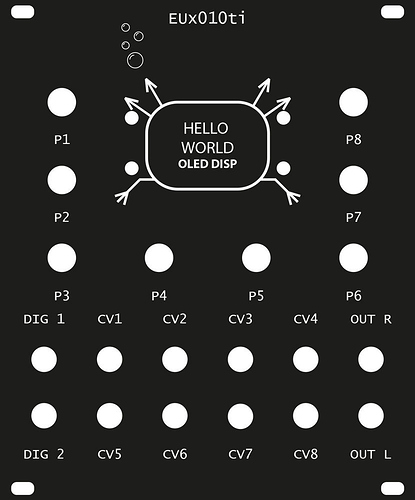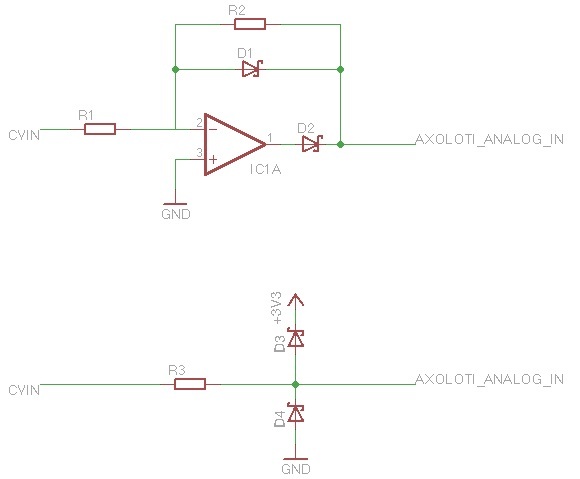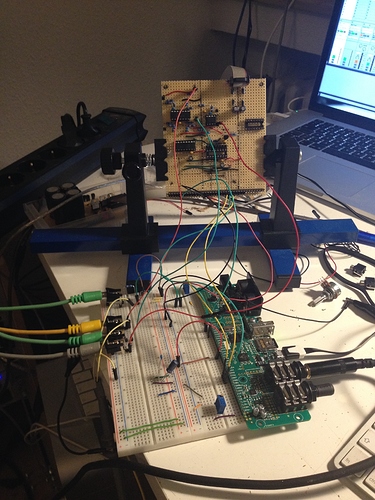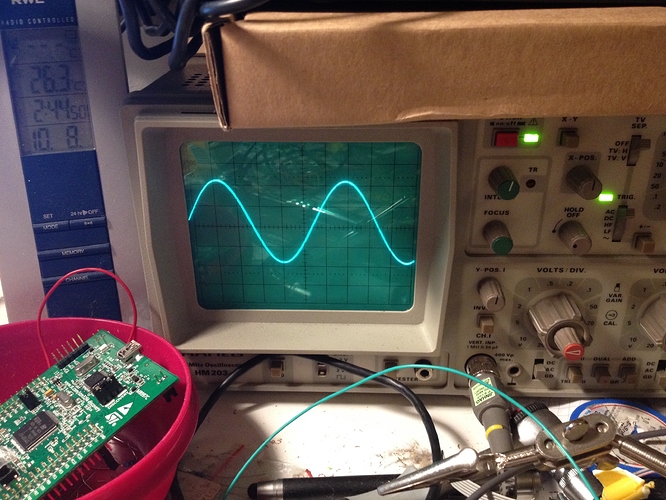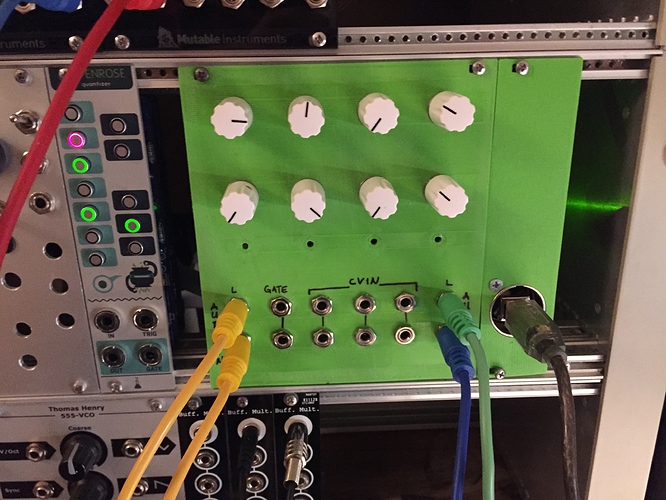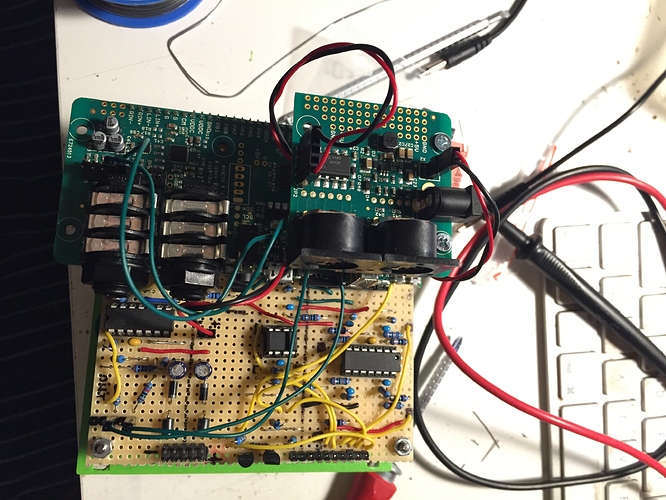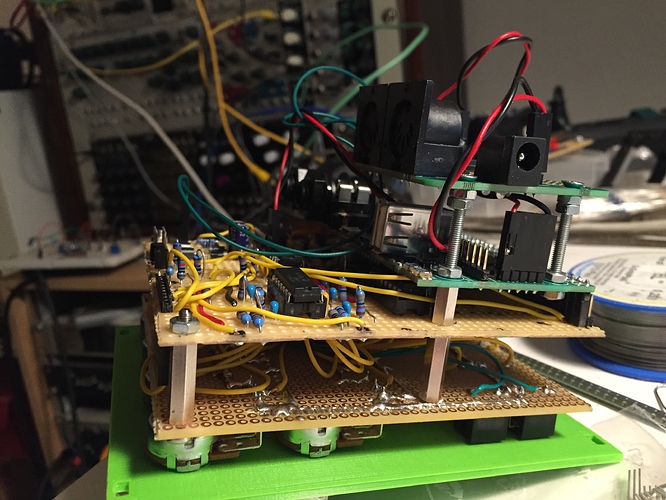Hi everyone,
I started a thread about CV input circuit for axoloti core at the google group but I had less time to work it out.
The last days, I have worked out some pcb designs. The current axoloti eagle files aren't online. My current pcb design is for the stm32f4 disco board but I will change it, if the axoloti files are online.
Can someone can help me with some software things? Does the MCP3208 CS/SHDN pin need a extra GPIO or can two MCPs use the NSS pin? I need to use two MCP3208 to read the analog voltages.
I want to use an OLED 128x64 display connect to I2C but which I2C port does axoloti fw use?
Will it possible to use encoders with axoloti? Where should I connect them?
SMD parts will be 1206 and SO-IC which are easy to solder.
Feature List:
- 2 Digital Ins
- 8 Pots
- 8 CV Ins (Range 0/5V or -5/+5V)
- 4 Pushbuttons
- 128x64 OLED Display
TOP PCB
BOTTOM PCB
20% transparent black Acryl Panel (Lasercut)

